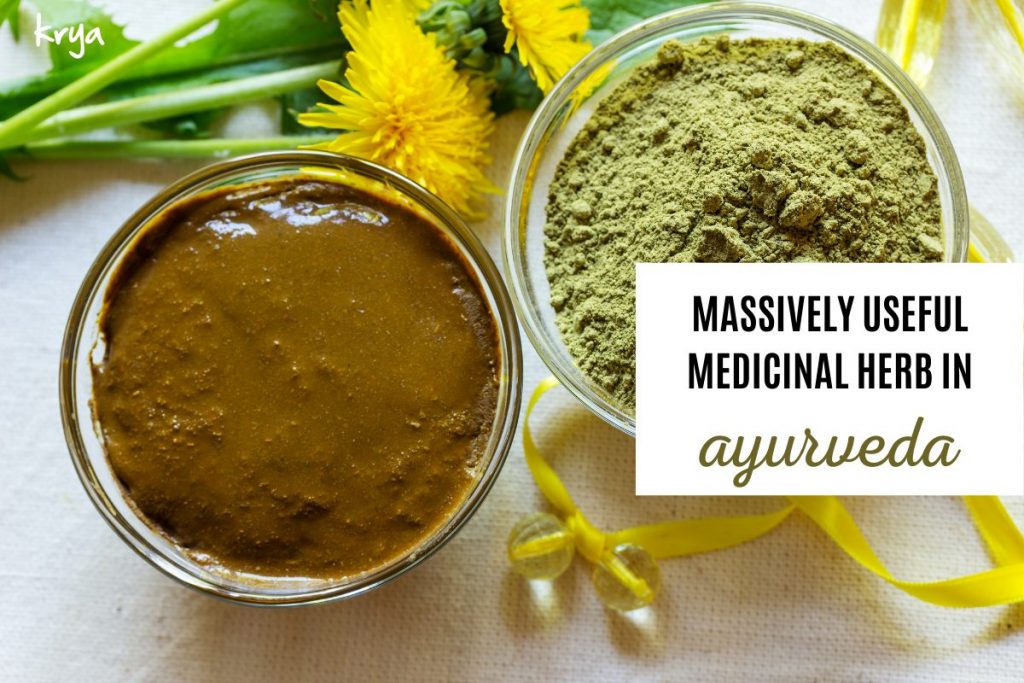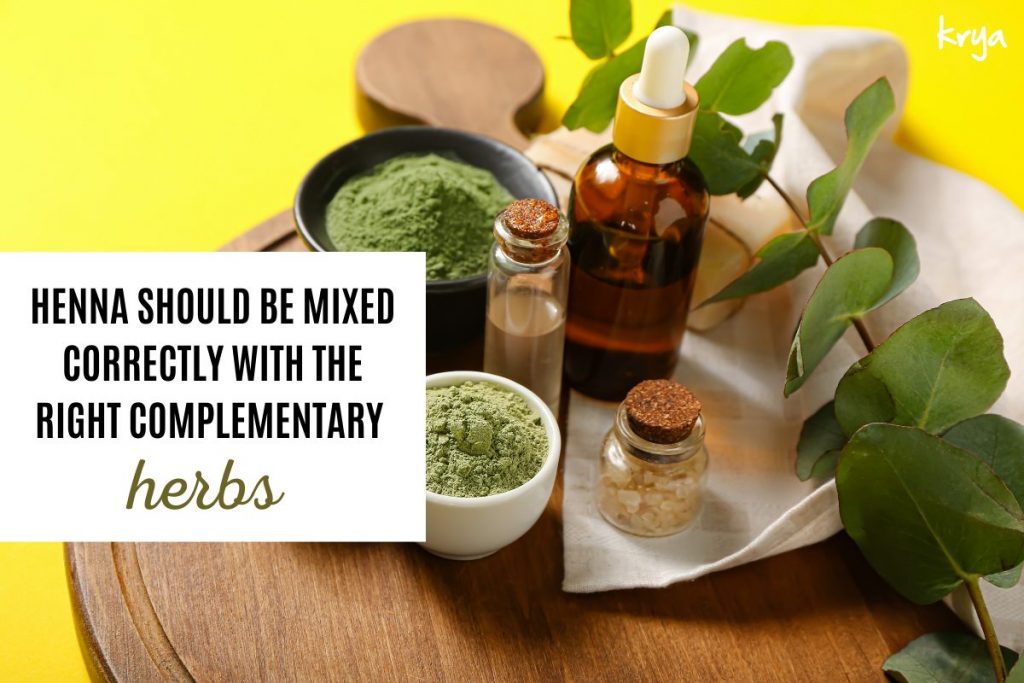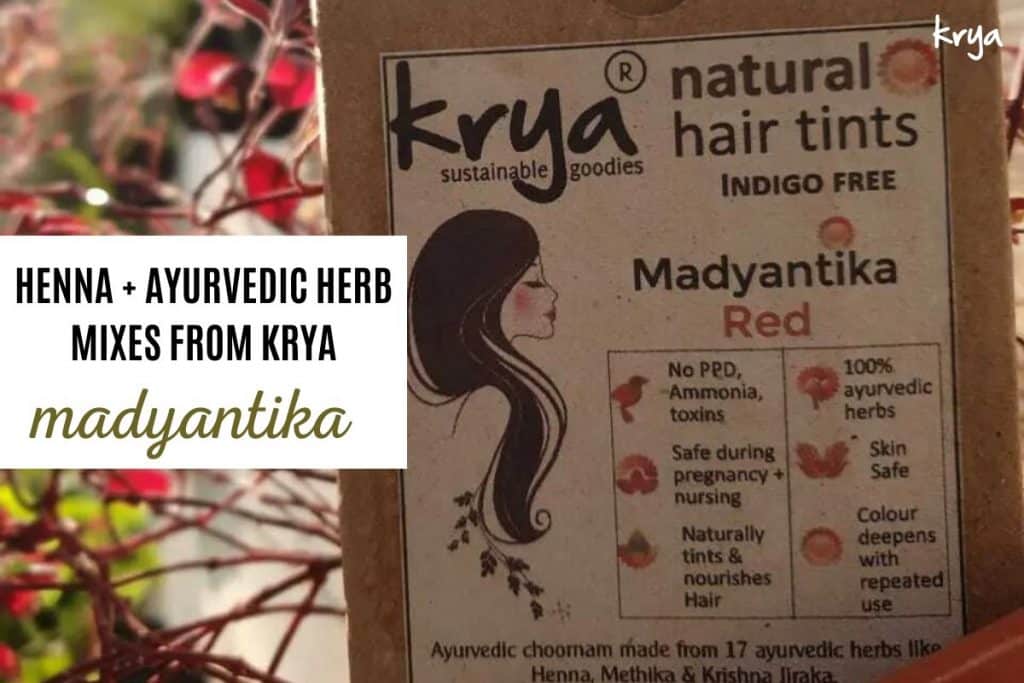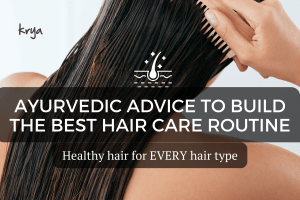This post was last updated on February 29, 2024 by Preethi Sukumaran
Henna . Mehndi Leaf. Marudhani Illai. If you are in the Indian subcontinent, you would have definitely encountered this beautiful leaf that dyes your skin a pretty shade of orange red. And you might have grown up seeing many women using this to decorate their hands or dye their hair.
But did you know that Henna is so much more than a hair dye? it has many medicinal uses as per classical Ayurvedic texts. There are also many important restrictions we must be aware of when we decide to use Henna.
A Botanical introduction to Henna
Lawsonia inermis or Henna plant, is a plant species from the Lythraceae family. In Western botanical classification, Lythraceae family is a large family of flowering plants (Angiosperms) and has more than 620 species of flowering herbs, bushes and shrubs in this family.

In Western botany, the Lythraceae family is characterized by a few points:
· Typical opposite arrangement of leaves
· Petals are crumpled in the bud (photo??)
· The outer integument of the seed (the outer seed coat) has many layers
The Lythraceae family includes plants as diverse as Henna and Pomegranate in its list. Let’s see how Ayurveda describes the Henna plant.
Ayurvedic properties of Henna
Lawsonia inermis / Mehndi is a herb mentioned in many of the ancient Ayurvedic Samhitas. In these texts, Henna is called “Madyantika”. Charaka Samhita records its use in the treatment of several diseases. Acharya Sushruta classifies it as a pitta doshahara drug (balances Pitta dosha).
Sushruta Samhita uses Henna as one of the ingredients in the Mahaneela ghrita which is a ghee based preparation suggested for Eka Kushta or Psoriasis.

Bhavaprakasha Nighantu textbook describes Madyantika leaves as diuretic, relieving pain, healing edema and a good cleanser of wounds. The text also describes the properties of henna seeds as a stimulant of the liver. The Henna flowers are beneficial to the heart, induce sleep and promote medhya (intelligence).
Medicinal Importance & Benefits of Henna
Every part of the Henna plant is medicinally rich and useful.
In Ayurveda, Henna is classified as having bitter (tikta) and astringent (kashaya) rasa with pungent (katu) vipaka (post digestive effect). It is cold in veerya or potency (Sheetya veerya).
Because of these properties it balances both Kapha and Pitta dosha. It is Laghu (light) and Rooksha (drying) in nature.
It is extremely useful to heal skin disease and burning sensation of the skin. Therefore, the leaf paste of Henna is applied as a natural dye or decoration for the hands and feet. It is also useful to soothe burning sensation in the hands and feet, in curing headaches and in healing skin disease like ringworm, scabies, etc.
It is a safe and pitta balancing natural dye when used along with Nilini (Indigofera tinctoria). Internally it can be used to treat a wide variety of disease It is used to bring down burning sensation in the body, for relieving burning sensation while passing urine, and in dysentery. It is also used to relieve fever, to induce sleep, as a support in heart disease and to reduce or control diarrhea and internal bleeding.
For all internal use of Henna, it is absolutely essential to consult an Ayurvedic Vaidya.
Is henna leaf good for hair?
Henna is described as pittadoshahara (pitta balancing) and useful in skin & scalp diseases. However, we must be careful about its quality of “rookshatva” or ability to dry out skin and hair.
For premature greying, dandruff, and other scalp disorders, Henna leaf is extremely useful. In fact, a combination of Henna with other scalp healing herbs like Khadira, Nilini, is extremely effective in chronic fungal dandruff, scalp, psoriasis, etc.
Premature greying and scalp oiliness are both signs of aggravated pitta dosha. As Henna leaf helps balance Pitta dosha and is also drying and light, it balances and cuts down oiliness and reduces scalp Pitta accumulation. This eventually reduces the tendency to grey fast.
If you have a combination scalp with Pitta and vata imbalances – i.e. premature greying with dry scalp and frizzy hair, Henna should be used carefully. Its drying nature must be counteracted with nourishing oils to ensure the herb does not over dry hair.
If you are exploring Henna as a means to increase hair volume naturally and reduce hair thinning, Henna must be sued a bit more carefully as it has a tendency to dry out hair and make it brittle in excess. Here, Henna should be used along with other herbs either as a Lepa or in an ayurvedic hair oil for better effects.

This is a very real problem if you regularly use a Henna based hair color. Regular Henna use can dry out the scalp and hair if not countered with regular oiling. So please oil your hair regularly. Also, use a very mild nondrying hair wash .
Adding oils, or high fat substances like curd to a Henna pack will interfere with dye uptake. So if your purpose is to color hair, it is best to avoid such additions to your henna pack.
How to source this herb correctly for hair care? Is organic the only factor?
Where has the Henna been cultivated ?
Henna leaf has long been present in the Indian sub-continent, as is seen from its extensive mentions in the ancient Ayurvedic texts. In commercial agriculture, the leaves and flowers are both prized for their economic value – the flowers are used to create a fragrant Henna extract which is used in perfumery.
Commercial Henna cultivation is concentrated in Pali district in Rajasthan, generating nearly 20,000 tonnes of dried Henna leaf every year. Apart from Pali, some cultivation is seen in Gujarat and Madhya Pradesh.

Henna leaves contain a wealth of botanical nutrients. The dyeing property of Henna is attributed to Lawsone ( 2-hydroxy-1, 4-naphthoquinone component, Color Index Number 75480, Natural Orange 6).
Lawsone acts as a semi fast dye for protein fiber and other textile fibers, and it carries several advantages over chemical dyes, especially when it is used in its raw, whole form (as henna leaf paste).
When we cultivate Henna for the sole purpose of dye, the cultivation method, soil and inputs (and natural weather) need to be conducive to develop the Lawsone quality and concentrate it.
For high dye yield, the climate in which Henna is grown needs to be extremely arid – even if it is grown in a more humid environment, watering of the plant should be restricted to concentrate the Lawsone molecules.
Therefore, for natural dyes, sourcing Henna from dry, arid places, like Sojat in Pali district of Rajasthan is ideal.
Maturity of plant from which Henna leaves have been harvested
Mature henna plants yield higher dye quality. It generally takes 2-3 years for a Henna plant to reach full maturity, after which it can be harvested for 20-25 years.
Harvesting leaves from very new plants results in lower dye yield.
When has the leaf been harvested & how has it been dried?
The third thing to keep in mind is when the leaves are harvested and how they are dried.
The best dye content comes from fully mature, yet green leaves which are subsequently shade dried.
Drying the leaves in direct sunlight brings down the final Lawsone content and hence affects the strength of the dye.
Have any harmful or unwanted adulterants been added to the herb ?
Henna is often sold as powder. But this powder can be easily contaminated. Common natural contaminants are Khejri leaf, Cassia Auriculata leaf and sometimes even fine green soil. These natural contaminants bring down henna’s dyeing ability and other botanical properties.
But to give a black shade to the natural Henna dye, many manufacturers add PPD to Henna leaf and sell it as Black Henna. Black Henna gives a very dark black colour within 1 hour of application. This is a clear sign of PPD contamination. Many times PPD will not be mentioned in the pack and will be surreptitiously added. The presence of PPD can be detected only through chemical analysis.

Routinely across Bangladesh, Pakistan, UAE, India, and Turkey, products which are sold as pure henna are found to contain PPD in them. This is a highly dangerous chemical adulterant which can lead to blindness, allergic reactions or even worse.
Is the herb sourced from an organic cultivation?
Using synthetic pesticide and fertilizer free, well harvested, and properly processed henna leaves without adulterants is preferable. While certified organic cultivations are preferred, certification costs are very expensive in India, given the average size of farm holds. Therefore you can also choose herbs harvested from a known small farmhold that uses only organic inputs.
For applications like skin healing, wound cleansing, anti fungal, anti-bacterial and anti-viral activity and also for its basic properties like pitta and kapha balance, it is best to use organically cultivated Henna.

How to use henna leaf on hair?
Sourcing high quality, shade dried, preferably organic Henna leaf is crucial for a good natural hair dye or treatment mask.
Henna dye is an acid mordant dye. This means that the Lawsone is released in an acidic medium. Therefore, adding high quality naturally acidic herbs like Amla, or Triphala is an excellent way to improve the dye release.
In Ayurveda, Henna is often used in conjunction with Iron, as Iron is also a Pittahara (pitta balancing) metal. Therefore, at Krya, we suggest mixing Henna paste in an iron vessel overnight along with beneficial acidic herbs like Amla. In the presence of natural acids and free Iron molecules from the iron bowl, the Henna paste attains a rich color that is slightly darker than its natural orange red color.

3 Natural Henna colours mixed with Ayurvedic herbs from Krya
We have 3 excellent Henna hair colours at Krya which come premixed with hair health-improving herbs like Amla, Khadira, Manjishta, Ratanjot.
Our henna is grown without chemical inputs, in a traditional Henna cultivation in Sojat . It is then carefully harvested and shade dried. It comes to the Krya factory as a whole dried leaf, to avoid any possible contamination. we then further clean and process it ourselves to suit different Krya products.
We use Henna across many Krya hair products like our ayurvedic hair wash choornams, hair lepas , hair oils and of course, our hair colours. We have a special Henna based range of hair colours at Krya.

Madyantika Uno, from our Indigo free natural hair colours, gives a rich natural orange red shade and is a great alternative to plain Henna. It is very healing and scalp soothing and is safe to be used.
Madyantika Red uses a larger amount of Manjishta and other such herbs. It can be used either as a natural hair dye, or as a hair conditioning pack to soothe mild scalp irritation, balance oil, etc.
Madyantika Brown uses hair growth improving herbs along with Henna. It is best used along with our other Krya hair packs to improve scalp health and hair quality. All 3 Madyantika products help balance Pitta and Kapha in the head.
Should I wash off the Henna paste with shampoo?
This depends on your purpose. If you are using your Henna hair pack as a natural dye, it is better to wash it off with plain water (this means you should have applied the pack on clean, freshly washed hair).
We suggest oiling your hair after a day as Henna tends to dry up the scalp. Once the hair is well oiled, you can wash it with a mild Ayurvedic hair choornam. Natural dyes fade much quicker than synthetic dyes, so shampoos are best avoided.

At Krya, for our Indigo based hair colours, we suggest using the Krya Creamy Colour strengthening Mask as the first wash product. This product is formulated to deepen the natural dye bond with hair. This product is not strictly needed after using our Madyantika colours, Instead, you can use one of our hair oils and our hair wash powders.
How to use Henna correctly for curly natural hair?
There are many websites online that suggest using herbs like Henna to help detoxify natural hair and improve hair growth, its quality, etc. This is especially suggested to allow natural hair to go back to its original texture and color and help thicken it. It is also suggested as a safer alternative to synthetic dyes and colours.
We have already discussed the ayurvedic properties of henna leaves above. It is pitta dosha balancing, healing on the scalp and skin, but is laghu (light) and its guna (quality) is drying (rooksha). Curly hair tends to be drier than straight hair as usually the sebum produced is not enough to fully moisturise and condition the hair strands. Therefore applying Henna without pre-oiling this type of hair can dry it out further.

Henna attaches physically to hair strands through special dye receptor sites that are present naturally on human hair. This increases the weight and thickness of the hair strands in these places. This is not inherent hair thickness, but the coating of a beneficial herb. As the hair becomes slightly heavier, the curl pattern can change and become more relaxed. The thickness of hair can also temporarily increase with the coating of the henna molecules in the hair.
However, to improve hair’s inherent strength and thickness, we need to work on aggravated Pitta. Pitta aggravation causes hair thinning, so this needs to be managed through diet and lifestyle practices.
Treatment plan for weak or thinning natural hair using henna & ayurvedic herbs
- Use Henna first as a treatment hair mask and not as a colour.
- Pre-oil hair & scalp generously before applying the Henna mask. This reduces the drying effect of Henna on natural hair.
- Use a gentle ayurvedic hair wash choornam to cleanse hair and scalp. Avoid synthetic shampoos and conditioners which can further dry out or clog the scalp
- Avoid using blow dryers, relaxers , straightening irons and other heat or chemical based treatments on hair
All these measures will improve hair quality, growth, and stability. In time, when hair is less fragile, you can transition to using Henna as a dye.
Product suggestion for Natural hair
We recommend the Krya Madyantika range of Henna tints with herbs for natural hair. Madyantika Brown is excellent for high hair loss. Madyantika Red is good for very damaged coarse hair. Madyantika Uno is good for normal natural hair.
We also recommend choosing a good ayurvedic hair oil from our range and a gentle ayurvedic hair wash choornam.
What is the difference between Henna leaf powder and Herbal Henna powder?
Henna Leaf powder is the finely ground powder of the Henna leaf. It could, depending upon where you source it from, be pure or come mixed with natural adulterants.
Herbal Henna powder is usually a mix of Henna and other Ayurvedic herbs. Some herbs like Shikakai, should not be present in Herbal Henna powder as Shikakai is also a strongly cleansing and drying herb.
If the Herbal Henna powder is not mixed with the right selection of Ayurvedic herbs, your hair could get very dry, frizzy and coarse after the application of this powder.
The Madyantika range is a good alternative if you are looking for the right mix of Henna with ayurvedic herbs. Please contact us if you want to know more about this range.
I am pregnant: Should I follow any safety precautions while using Henna?
Congratulations! Please make sure you source your Henna from an ethical manufacturer who is upfront about what exactly goes into the product. Check the website and back of pack carefully for the ingredient list.

If in doubt, source fresh henna leaves which are unadulterated with chemicals and grind in your home into a fine paste. Leave it overnight in an iron bowl and use this henna paste.
Make sure you avoid using Henna in wet weather, if you are prone to colds or coughs, etc. While Henna itself is Kapha balancing ,wet Henna paste on the head can trigger colds in susceptible individuals.
Krya’s Henna products are carefully processed, unadulterated and suitable for pregnant and breastfeeding mothers. We do not recommend trying Indigo based colours for the very first time during pregnancy.
Instead, you can use any of our 3 Madyantika Henna tints.
Can I use Pure Henna paste / powder on my baby / child?
Henna is NOT advised to be used in Ayurveda on infants and very small children. This is because it is extremely drying and balances Pitta and Kapha very quickly and can trigger colds and coughs.
Ayurveda gives us an extremely restricted set of herbs to use on infants to the age of 3. This is because their immune system is very undeveloped and they can react very quickly and adversely to herbs which are generally considered safe for adults.
Therefore the Samhitas (Ayurvedic texts) give us a very limited set of herbs that we can use for infants. Henna is not one of these herbs, as its action can be too cooling and therefore give a sudden temperature shock to infants.

however, in some countries, there is a traditional practice of painting infants’ palms and soles with henna paste. Although Henna has an extremely low chance of triggering an allergic reaction, we must be mindful of certain issues.
The first is that this practice can trigger sudden temperature shock triggering cough, cold or fever in the infant.
Second , in the middle east and many parts of the world, there is a X chormosome-linked genetic deficiency called G6Pd deficiency -Glucose 6 Phosphate Dehydrogenase deficiency. This is a common enzyme deficiency affecting 400 million people every year across the world.
In G6PD deficiency, specific cell types are unable to regenerate reduced nicotinamide adenine dinucleotide phosphate (NADPH) as the G6PD enzyme normally catalyzes this reaction. Certain kinds of drugs, infections or naturally occuring ingredients can trigger non-spherocytic hemolytic anemia in G6PD enzyme deficient patients.
In infants with G6PD deficiency, the Lawsone content from Henna leaves mimics the action of naphthoquinone molecule, which can trigger oxidative hemolysis in G6PD deficient individuals. The reaction is extremely acute in infants. So Henna application can carry a severe risk if the infant is G6PD deficient.
The third issue is that of contamination. Henna powder is very often contaminated with PPD. Unknowingly parents may use contaminated Henna on infants believing it is safe. So even if the infant is not G6PD deficient, PPD itself could trigger an extremely harmful adverse reaction in infants.
For these reasons Henna application should be avoided for infants. If using for children over 7, please ensure you use fresh Henna leaf paste in traditionally approved methods like decorating the soles and palms alone. Do NOT use Henna cones or prepared powder from unverified sources.
Can I self-treat psoriasis with Henna paste?
Henna is indicated in diseases like Psoriasis and is considered an excellent skin cleanser and healing agent for skin. However, in the ancient ayurvedic text, Sushruta Samhita, Acharya Sushruta has used Henna in combination with other herbs like Neem and Tulsi and rendered it in Ghrita (cow ghee). It has not been used directly in the form of a wet paste.
Ayurvedic acharyas always ensure that medicines or skin formulae are well balanced. Complementary herbs are used which balance each other, and each formula is processed in a specific medium. As Henna paste has not been suggested directly for application to treat these diseases, we should avoid this use as well.
Instead for diseases like psoriasis which are chronic and require extensive treatment, please consult an ayuvedic vaidya.

Please do not self diagnose and self treat yourself or your child or your family member using information available online.
I have extremely dry, frizzy hair or extremely curly hair. Will henna suit me?
Henn can be very drying on hair which is already dry or frizzy. If you are using it as a natural dye, we suggest following the precautions already mentioned above like extensively oiling hair with an Ayurvedic hair oil, using an Ayurvedic hair wash choornam, etc.
If you are using Henna to strengthen your hair, we suggest using it after you pre-oil your hair well. This reduces the drying effect of Henna. You can also use our products formulated specially to improve scalp quality for dry frizzy and coarse hair like this pack or this one.
I do not want an orange color – I want a dark brown or black color from Henna. Is it possible?
Henna gives a deep orange shade of colour. We can darken the colour slightly by adding herbs like Amla, Triphala and allowing Henna to interact with iron overnight. Depending upon your natural hair colour, this can give a slightly darker shade of colour.
Alternatively, we can also add strong coffee decoction or tea decoction to Henna to deepen its shade. This is not something we advise as skin can trans-dermally absorb caffeine and tannins from coffee and tea. This can leave you feeling light headed, dizzy and stimulate headaches in sensitive individuals.
All of this can again darken the color a bit more.
However, a dark brown or a black shade is NOT possible with henna alone. Only if we mix Henna with Indigo, or apply Indigo after Henna, we can slowly achieve a purplish black shade – with repeated applications this becomes a dark brown to a soft natural black shade.
If you are interested in natural Indigo colours, please explore Krya’s Indigo based hair colours here.
If your Henna colour gives you black colour very fast without Indigo, it could be contaminated with PPD. PPD is a hazardous chemical color and should be avoided at all costs.
Even a minimal concentration of PPD can bioaccumulate and suddenly give you a strong allergic reaction a long time after the dye is used. Hence please avoid PPD at all times. If you have the slightest suspicion that your henna pack could contain PPD, discard the pack safely and do not use it . Dispose this of safely as it is highly toxic to animals, soil and water.
Note on PPD Contamination of Henna powder
PPD (Para phenylenediamine) is a serious adulterant/addition to Commercial Henna powder. PPD is added to BOTH henna for body art and Henna for Hair dyes. This chemical is added to darken the final shade of the Henna colour – it gives a deep brownish black colour. It also shortens the dyeing time. Pure Henna needs between 4- 8 hours of application time to give the desired color, especially in body art. With the addition of PPD, we can get dye transfer within an hour.
However, PPD is an extremely dangerous chemical. PPD exposure is an occupational hazard for hair dressers and salon workers. It can trigger reactions when it is inhaled, through skin or eye contact or via ingestion.
Short term exposure effects to PPD may include severe dermatitis,asthma, gastritis, renal failure, vertigo, tremors, convulsions, eye irritation and in rare cases even induce a coma. Long term exposure can aggravate eczematous contact dermatitis. PPD is a severe allergen – even if someone does not develop a reaction after first exposure, they can become sensitized to PPD over time and develop a reaction later. PPD also provokes “cross allergies” – triggering allergic reactions when people are exposed to other para substituted amino compounds.
People are unaware of the severe health risks of PPD. Believing that black henna is a natural product, people can mistakenly use black henna for treating skin diseases, etc with potentially fatal results. The reaction is especially dangerous and severe in children under 16 years.
PPD intoxication can occur within 1 hour of the application of products containing PPD like Body art henna. The patient can develop severe hypersensitivity, cardiac complications, liver failure, and renal failure within just one hour! We enclose a quote from the attached study:
“There is no specific antidote to PPD and treatment is primarily conservative. The mortality rate is very high even after early intervention (31%)”.
Fatal paraphenylenediamine poisoning due to black henna
Güntülü Şık, Agop Çıtak
Pediatric Intensive Care Unit, Department of Pediatrics, Istanbul University Faculty of Medicine, İstanbul, Turkey.

Please be extremely careful when sourcing Henna online. Rely on very trusted companies only. avoid any product which states that you will get a black color from Henna or anything with the name Black Henna. Double check from the company if you’re buying dried leaves henna powder and if there is any addition of PPD. If the company processes the leaf themselves, the chances of contamination are low. The contamination chance is high if the company buys and processes pre-crushed Henna powder.
To conclude: the ayurvedic and medicinal benefits of henna
Henna is a wonderful, ancient Ayurvedic herb. It has many beneficial properties and has been used in a wide variety of disorders in Ayurveda. It has potent anti viral, anti fungal, anti bacterial pitta and kapha balancing properties.
In this article, we have discussed the ayurvedic properties, medicinal benefits of henna, and how we can use it safely as a hair care product. We have also discussed many use case scenarios like using henna for natural hair, using it as a natural dye, and also using it as a hair pack.
We have also discussed many questions we are regularly asked at Krya on whether Henna is safe for pregnant women, if it can be used for babies, the concerns around PPD contamination, etc.
Our mission at Krya is to make available both high quality ayurvedic products and high quality useful information to help our consumers and readers make diligent and informed choices in their wellness journey. We hope you found this article on Henna useful and that it answered your questions.
If you have any questions on this article, please do write to us or DM us on WhatsApp.





